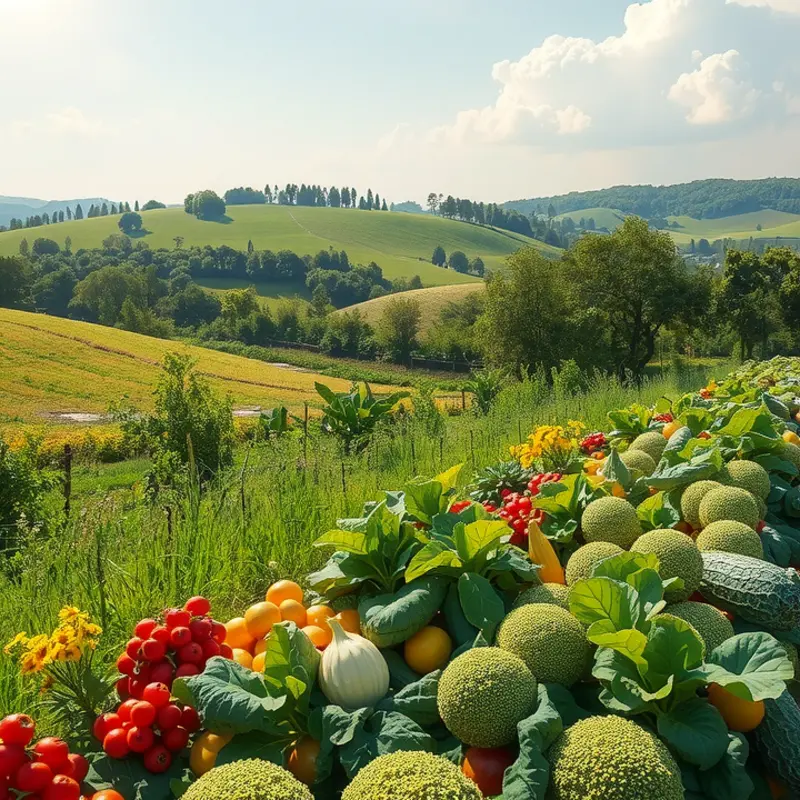Cooking can sometimes feel daunting, especially when it comes to dealing with sticky messes in the kitchen. However, mastering effective non-stick methods is within every cook’s reach. By implementing straightforward techniques and using the right tools, meal preparation can become not only easier but also more enjoyable. This guide emphasizes practical tips suitable for all skill levels, ensuring your food not only cooks beautifully but also releases effortlessly from cookware.
Understanding Non-Stick Cookware

Choosing the right cookware is crucial to mastering non-stick techniques in your culinary ventures. Different types of non-stick surfaces cater to various cooking needs, and understanding their characteristics can enhance your cooking experience.
Among the most popular non-stick options are Teflon-coated pans. These pans are known for their smooth surface, which reduces the use of fats while cooking. However, they require careful handling. To maintain their non-stick quality, cook on low to medium heat and avoid metal utensils that might scratch the coating.
Ceramic cookware offers a more eco-friendly alternative. Derived from sand, ceramic pots and pans are free from chemicals like PTFE and PFOA. They offer excellent heat distribution and can withstand higher temperatures. Their non-stick properties might diminish over time, so it’s crucial to follow gentle washing methods and use softer cooking utensils.
For those who desire durability, hard-anodized aluminum is a top choice. This material stands up to higher cooking temperatures and resists scratches better than many other options. Hard-anodized cookware offers a non-stick experience similar to Teflon but with increased resilience, demanding only a little extra care in cleaning to extend its lifespan.
Another robust option is cast iron, especially when seasoned properly. While traditionally associated with stickiness, a well-seasoned cast iron skillet provides a natural non-stick surface. This material excels in heat retention, making it perfect for searing meats or baking dishes that require even temperature control.
To prolong the lifespan of your non-stick cookware, follow simple care practices. Always allow the pan to cool before washing to prevent warping. Hand wash with mild detergents and avoid abrasives. If residue builds up, consider soaking the pan in warm water with a bit of baking soda before gently scrubbing.
Matching the cookware to your cooking style can also mitigate sticking issues. For instance, roasting vegetables might be better suited to a hard-anodized pan due to its high heat capacity, while delicate fish might require a ceramic pan. For further tips on optimizing your kitchen practices, check out our practical ingredient batching guide, which outlines efficient ways to prepare ingredients and utilize kitchen resources.
Understanding and selecting the right cookware is foundational to achieving non-stick success. As you integrate these techniques and tips into your culinary escapades, you’ll find cooking becomes more enjoyable and results more consistent. Always handle your cookware with intention to ensure your non-stick surfaces serve you well for years to come.
Techniques to Prevent Sticking

Preventing food from sticking to pans takes understanding and precision in technique. Begin by correctly preheating your pan, a crucial step that many home cooks overlook. An adequately preheated pan minimizes sticking effectively. Place the pan over medium heat for a couple of minutes before adding any ingredients. To test if it’s ready, add a few drops of water; they should dance and evaporate quickly if the temperature is right.
Using fats judiciously is another artful strategy. Once your pan is hot, introduce oils or butter, swirling them to coat the surface evenly. The type of fat matters, too: high-heat oils like avocado or grapeseed oil handle temperature well without breaking down, fewer residues build up, leading to less sticking. Be mindful of not overcrowding the pan, ensuring even cooking and avoiding the release of excess moisture, which can cause sticking.
Understanding the moisture content in foods further aids in sticking prevention. When moisture-laden foods such as mushrooms or zucchini release water, sticking is more likely. Allow these foods to sauté properly by providing ample space in the pan. This minimizes steam and encourages caramelization. Additionally, make sure ingredients are dry before cooking by patting them with a paper towel, reducing the moisture content, thereby limiting the chance of sticking.
Another technique is to employ the right tools. Opt for spatulas with thin, flexible edges which can slide under food easily without damaging. Non-metal utensils can also prevent scratching and help maintain the integrity of your pan’s surface. Using the right utensil ensures seamless flipping and removal, contributing to effortless culinary creations.
Temperature control is fundamental. A sudden drop or surge can disrupt cooking processes and lead to sticking. Maintain consistent heat levels according to each dish’s requirements, adjusting only as necessary and not excessively. A reliable food thermometer can be invaluable here to gauge the pan’s surface temperature and ensure it remains within optimal cooking ranges.
Once cooking ends, ensure a graceful release of your dish by letting it rest for a moment, allowing cooked proteins to relax and release naturally from the pan. This practice offers patience as a substantial cooking tool, augmenting flavor and presentation.
Lastly, consider experimenting with different cooking surfaces. While non-stick pans offer ease, stainless steel has advantages in flavor development and browning, once mastered. Emphasize acquiring a diverse set of cooking vessels, each suited for specific culinary tasks, enhancing your cooking repertoire.
To further enhance your kitchen skills with minimal waste, explore low-waste cooking prep for sustainable practices that complement effective cooking techniques.
By mastering these techniques, you’re not only preventing your meals from sticking but also unlocking a professional sheen to your everyday cooking endeavors.
Final words
Mastering non-stick methods can significantly elevate your cooking experience and boost your confidence in the kitchen. By knowing the right cookware and applying simple techniques to prevent sticking, you can create delicious meals without the frustration that often comes with cooking. Remember, practice is key! Experiment with different methods and find what works best for you. The joy of cooking shouldn’t be marred by sticky situations, so embrace these tips and transform your mealtime into a delightful and stress-free experience.







